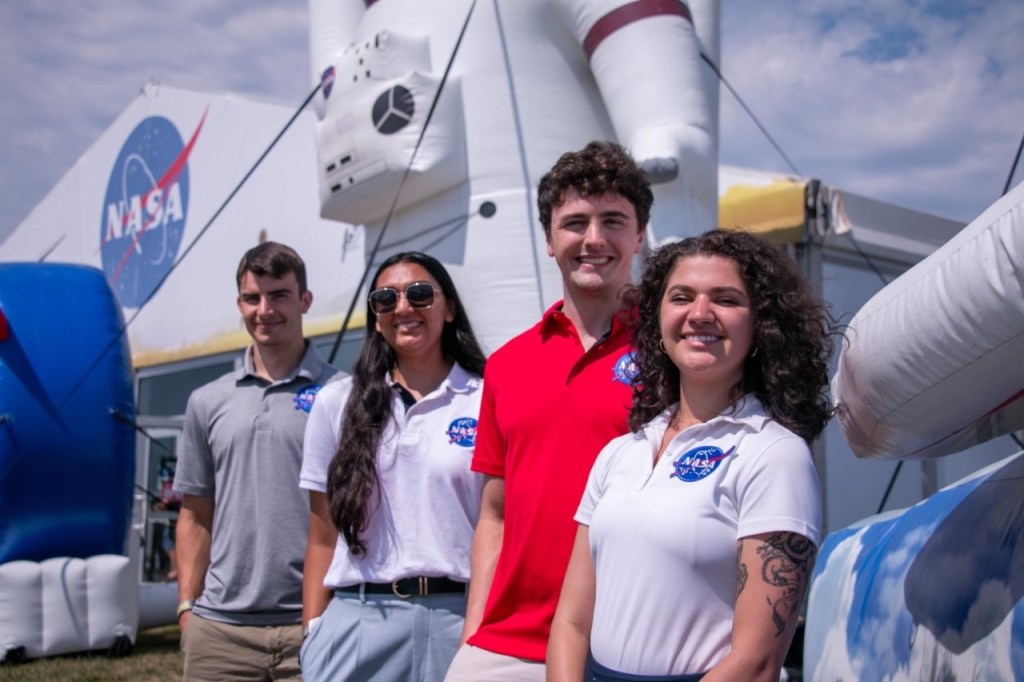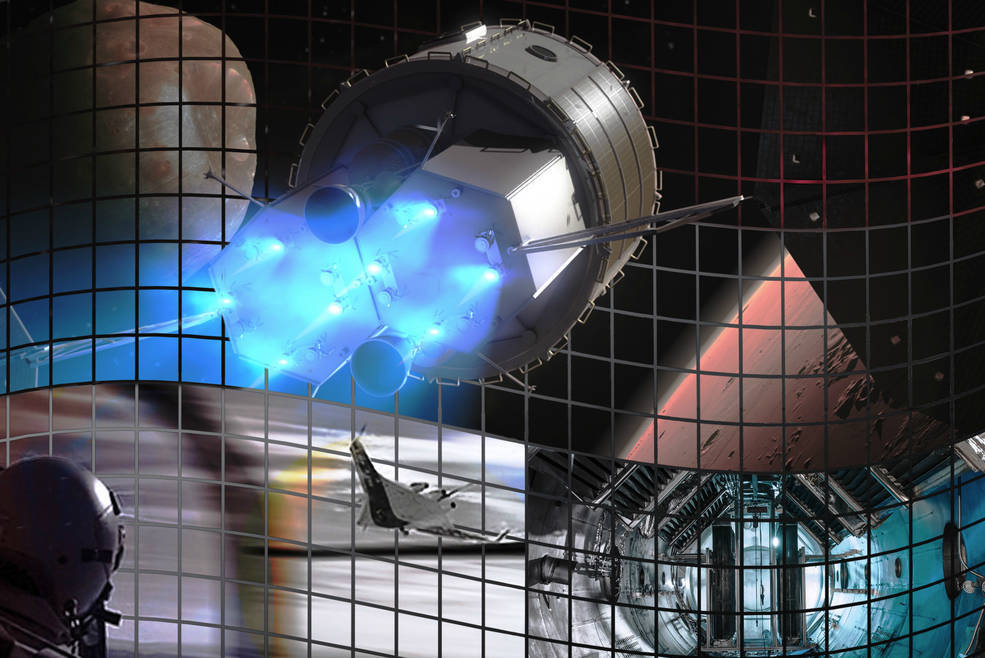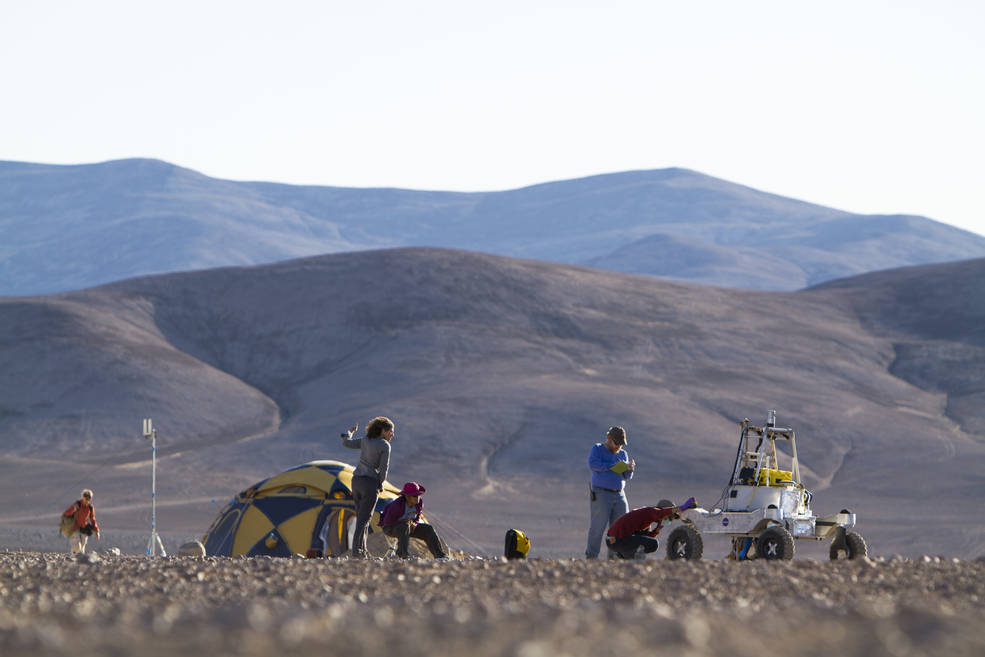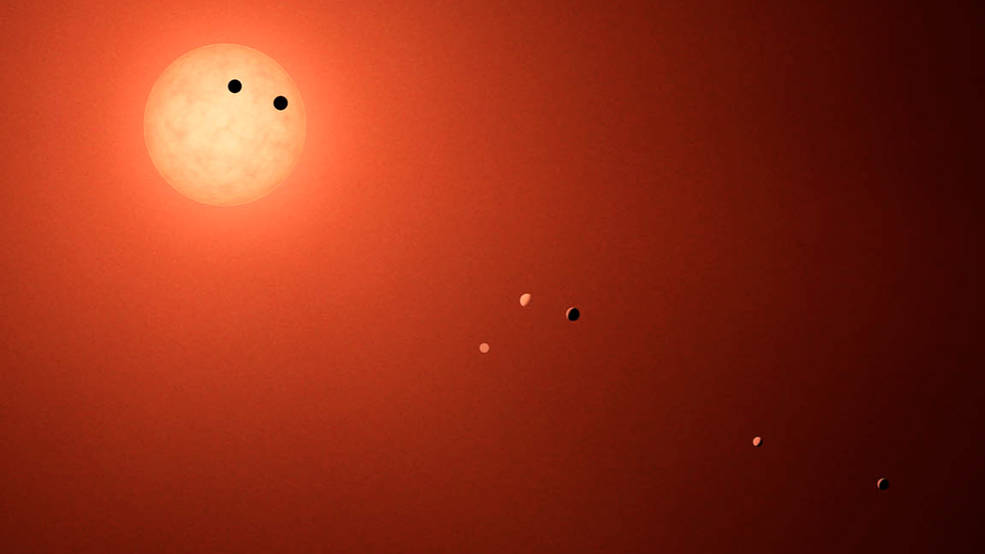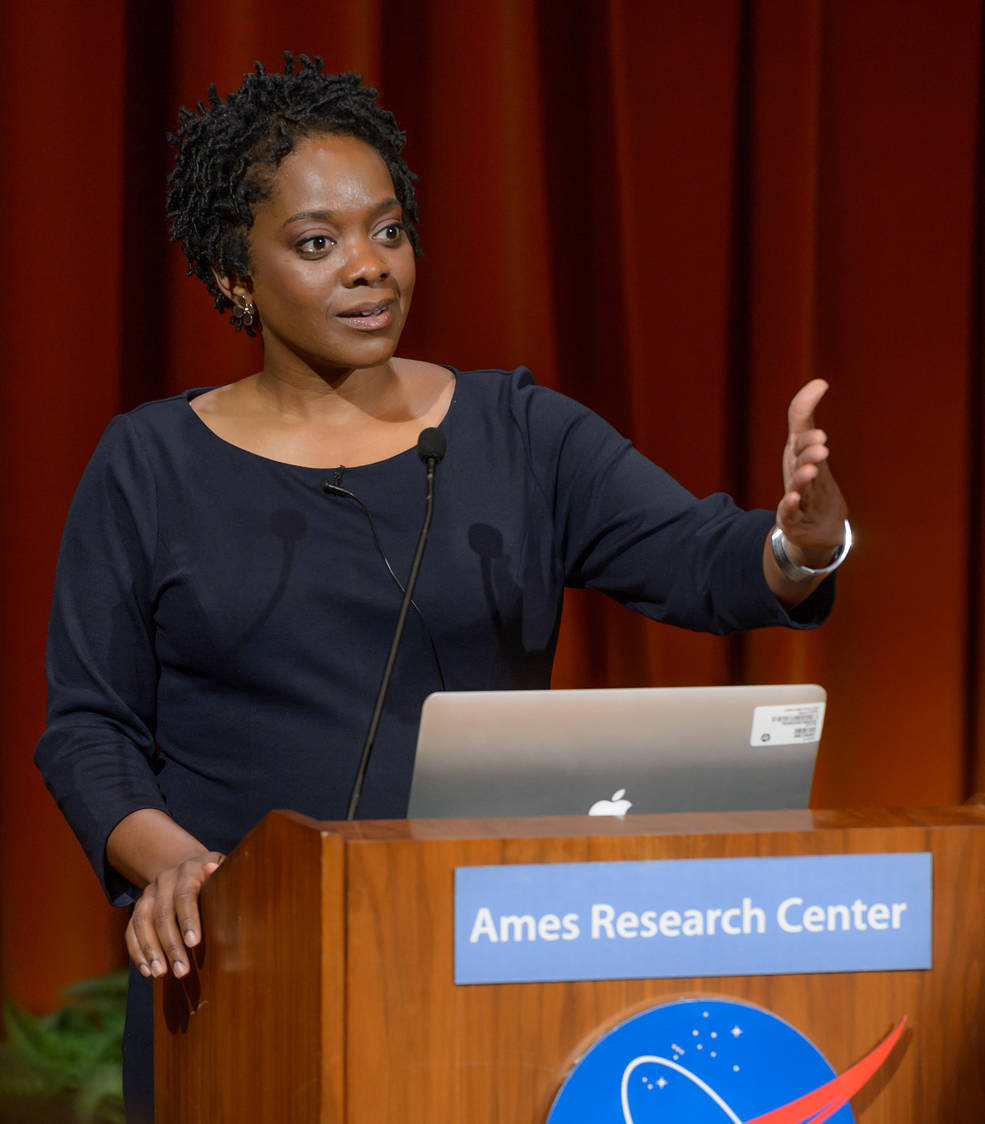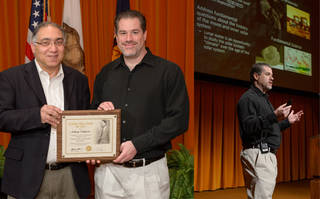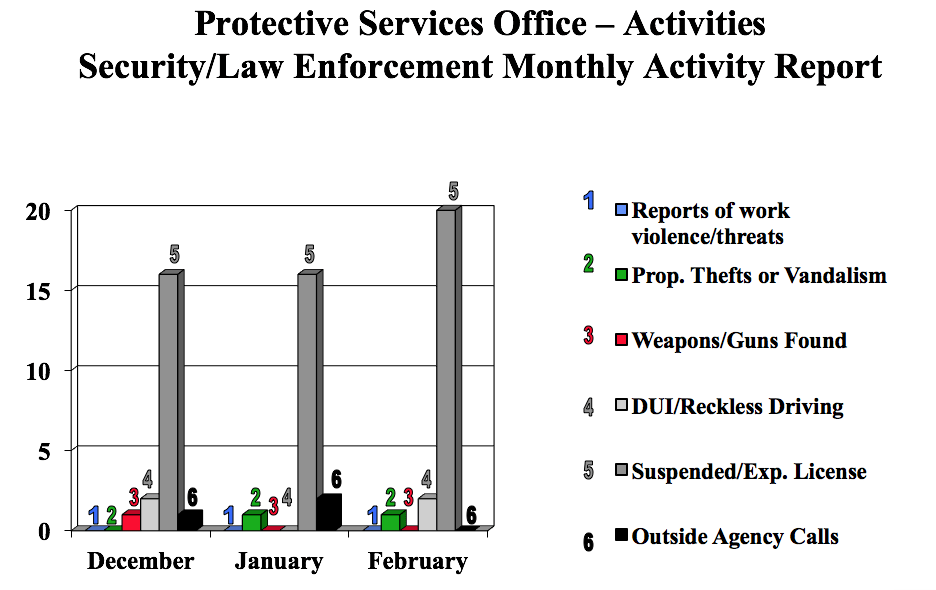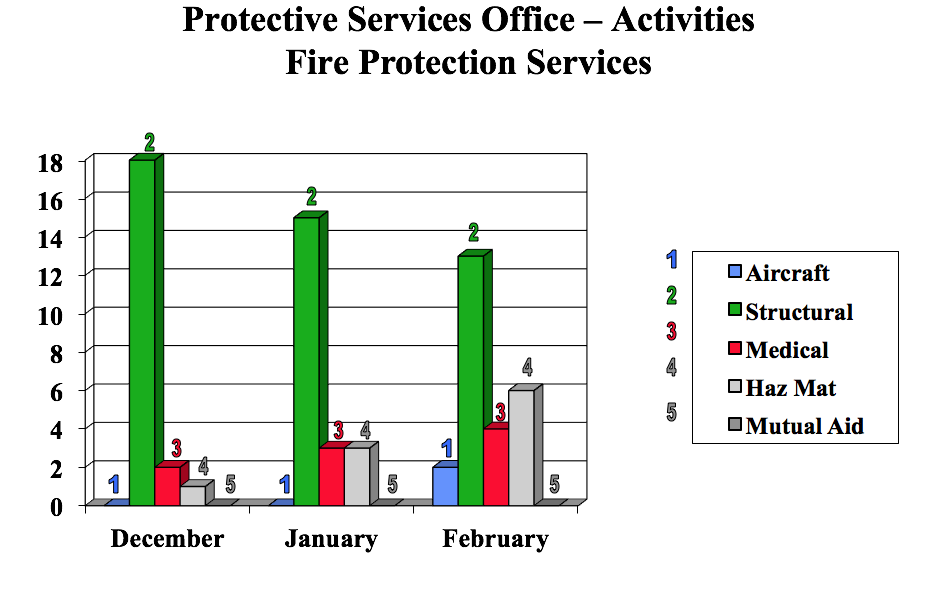NASA's Kepler Provides Another Peek At Ultra-cool Neighbor
NASA Selects More Than 100 Small Business Projects to Advance Space Innovation
by Kimberly Williams
NASA has selected 133 proposals from U.S. companies to conduct research and develop technologies that will enable NASA’s future missions into deep space and benefit the U.S. economy.
The proposals, valued at approximately $100 million total for contract negotiations, were selected under Phase II of NASA’s Small Business Innovation Research (SBIR) program.
“We are pleased to select SBIR proposals from over 112 small businesses,” said Steve Jurczyk, associate administrator for the Space Technology Mission Directorate (STMD) at NASA Headquarters in Washington. “Technology drives exploration, and selection of these projects represents an investment in achieving our space exploration goals and supporting the U.S. innovation economy, as well.”
SBIR Phase II projects will expand on the results of recently completed Phase I projects. Phase I projects received six-month contracts of as much as $125,000. Phase II contracts are awarded up to $750,000 and the period of performance is no more than two years. Successful Phase II projects may go on to Phase III of the program – commercialization of the innovation.
The proposals were selected according to their technical merit and feasibility, in addition to the experience, qualifications and facilities of the companies, and their work plans and commercial potential. The fundamental requirement, however, is that the proposals answer needs that are core to the agency’s future exploration goals, such as:
- Multifunctional, lightweight metallic materials that can be used to create the advanced structures needed for future deep space missions and next-generation aeronautics capabilities;
- Compact, high-powered 3-D LIDAR (light detection and ranging) system for unmanned aircraft that significantly reduces the size and weight of object-detection sensors, with applications ranging from autonomous aircraft to space missions;
- A technology that integrates a plastic recycling system, a dry-heat sterilization system and a 3-D printer to create materials that can be used to print food- and medical-grade devices, lowering mission costs and trash generated on long-duration manned missions;
- A technology that will allow constellations of individual satellites to fly in precise formation and perform coordinated science, enabling new capabilities such as autonomous rendezvous and docking, and precision formation flying both for human and robotic exploration missions.
NASA’s SBIR program is a competitive, awards-based program that encourages U.S. small businesses to engage in federal research, development and commercialization. The program allows businesses to explore technological potential and provides the incentive to profit from new commercial products and services. Small businesses create about two out of every three jobs in the United States each year, and about half the workforce either own or work for a small business.
The SBIR program is managed for STMD by NASA Ames. STMD is responsible for developing the cross-cutting, pioneering, new technologies and capabilities needed by the agency to achieve its current and future missions.
For more information about the Small Business Innovation Research program, visit: http://sbir.nasa.gov
Mars Rover Tests Driving, Drilling and Detecting Life in Chile’s High Desert
by Darryl Waller
Due to its extreme dryness, the Atacama Desert in Chile is one of the most important environments on Earth for researchers who need to approximate the conditions of Mars.
Working in 90-plus-degree heat in arguably the driest place on Earth, the team behind NASA’s Atacama Rover Astrobiology Drilling Studies, or ARADS, project just completed its second season of tests. The project aims to show that roving, drilling and life-detection can all happen together, with the goal of demonstrating the technical feasibility and scientific value of a mission that searches for evidence of life on Mars.
Thirty-five researchers, scientists, engineers and support staff spent a month testing tools and collecting scientific data on how life exists in the high desert today and how it first developed in this environment.
Geological and soil mineral evidence suggests that extremely dry conditions have persisted in the Atacama Desert for at least 10 to 15 million years, and possibly far longer. Coupled with strong, persistent ultraviolet radiation from the sun, this means that what little life exists in the Atacama is in the form of microbes living underground or inside rocks.
Similarly, if life exists or ever existed on Mars, the planet’s surface dryness and extensive radiation exposure would likely drive it underground. That makes locations like the Atacama good places to practice looking for life on Mars.
Roving, Drilling, Hunting for Life
Until human explorers arrive on the Red Planet, robotic missions will take the lead, with future missions probing the surface and drilling underground at promising locations. During their month in the hyper-arid core of the desert, near Estacion Yungay, the ARADS team tested technology for this purpose. Developed by NASA Ames,the KREX-2 rover carries a lightweight, low-power, two-meter drill, along with a robotic sample transfer arm. This year it was accompanied by three life-detection instruments, positioned nearby, which were fed samples acquired by the rover’s drill.
Designed to look for evidence of life, these tools include the Wet Chemistry Laboratory, an instrument developed by NASA’s Jet Propulsion Laboratory that flew on the 2007 Phoenix mission to Mars, and the Signs of Life Detector, contributed by Spain’s Center for Astrobiology. The latter uses biochemical methods distantly related to home medical tests. While diabetics, for instance, may monitor their blood sugar with a device that detects the presence of a single molecule – glucose – the rover instrument will search for 512 different biological compounds.
Both of these tools were tested in the first ARADS season in February 2016, and returned this year for a trial of some new modifications.
New for 2017 is the Microfluidic Life Analyzer from JPL, making its first field test. It processes minuscule volumes of fluid samples to isolate amino acids, a building block of life.
The engineers and scientists working in the Atacama during the month of February were successful in their primary objective to drill from the rover to depths of up to two meters, acquiring samples that the three ARADS instruments searched for signs of current or past life.
“The drill, rover and robot arm combination behaved beautifully in the field,” said ARADS Principal Investigator Brian Glass of Ames. “It was a steady platform that enabled us to go deeper than we expected.”
This year was the second in a series of four annual tests planned through early 2019. Next year is expected to see the rover itself carry and operate the life-detection instruments, alongside the drill tested this year.
In our lifetimes, NASA and its partners will be able to answer some of humanity’s fundamental questions about life beyond Earth, such as whether Mars was home to microbial life in the past, and if it still is today. Our robotic scientific explorers are now paving the way. Together, humans and robotics will pioneer Mars and the solar system.
NASA’s Kepler Space Telescope Provides Another Peek At Ultra-cool Neighbor
by Michele Johnson
On Feb. 22, 2017, astronomers announced that the ultra-cool dwarf star, TRAPPIST-1, hosts a total of seven Earth-size planets that are likely rocky, a discovery made by NASA’s Spitzer Space Telescope in combination with ground-based telescopes. NASA’s planet-hunting Kepler space telescope also has been observing this star since December 2016. Now these additional data about TRAPPIST-1 from Kepler are available to the scientific community.
During the period of Dec. 15, 2016 to March 4, 2017, the Kepler spacecraft, operating as the K2 mission, collected data on the star’s minuscule changes in brightness due to transiting planets. These additional observations are expected to allow astronomers to refine the previous measurements of six planets, pin down the orbital period and mass of the seventh and farthest planet, TRAPPIST-1h, and learn more about the magnetic activity of the host star.
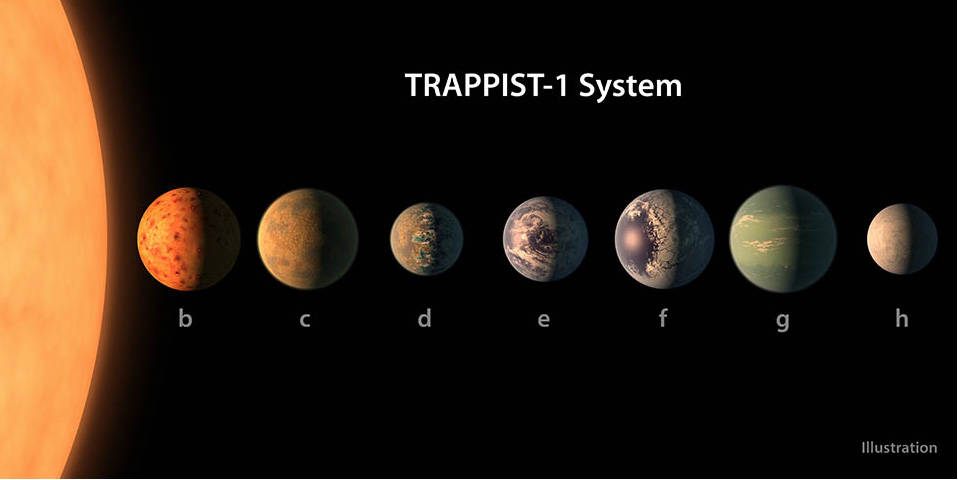
“Scientists and enthusiasts around the world are invested in learning everything they can about these Earth-size worlds,” said Geert Barentsen, K2 research scientist at NASA Ames. “Providing the K2 raw data as quickly as possible was a priority to give investigators an early look so they could best define their follow-up research plans. We’re thrilled that this will also allow the public to witness the process of discovery.”
The release of the raw, uncalibrated data collected will aid astronomers in preparing proposals due this month to use telescopes on Earth next winter to further investigate TRAPPIST-1. By late May, the routine processing of the data will be completed and the fully calibrated data will be made available at the public archive.
The observation period, known as K2 Campaign 12, provides 74 days of monitoring. This is the longest, nearly continuous set of observations of TRAPPIST-1 yet, and provides researchers with an opportunity to further study the gravitational interaction between the seven planets, and search for planets that may remain undiscovered in the system.
TRAPPIST-1 wasn’t always on the radar to study. In fact, the initial coordinates for the patch of sky defined as Campaign 12 were set in Oct. 2015. That was before the planets orbiting TRAPPIST-1 were known to exist, so Kepler would have just missed the region of space that is home to this newfound star system of interest.
But in May 2016, when the discovery of three of TRAPPIST-1’s planets was first announced, the teams at NASA and Ball Aerospace quickly reworked the calculations and rewrote and tested the commands that would be programmed into the spacecraft’s operating system to make a slight pointing adjustment for Campaign 12. By Oct. 2016, Kepler was ready and waiting to begin the study of our intriguing neighbor in the constellation Aquarius.
“We were lucky that the K2 mission was able to observe TRAPPIST-1. The observing field for Campaign 12 was set when the discovery of the first planets orbiting TRAPPIST-1 was announced, and the science community had already submitted proposals for specific targets of interest in that field,” said Michael Haas, science office director for the Kepler and K2 missions at Ames. “The unexpected opportunity to further study the TRAPPIST-1 system was quickly recognized and the agility of the K2 team and science community prevailed once again.”
The added refinements to the previous measurements of the known planets and any additional planets that may be discovered in the K2 data will help astronomers plan for follow-up studies of the neighboring TRAPPIST-1 worlds using NASA’s upcoming James Webb Space Telescope.
During Campaign 12, a cosmic ray event reset the spacecraft’s onboard software causing a five-day break in science data collection. The benign event is the fourth occurrence of cosmic ray susceptibility since launch in March 2009. The spacecraft remains healthy and is operating nominally.
Ames manages the Kepler and K2 missions for NASA’s Science Mission Directorate. NASA’s Jet Propulsion Laboratory in Pasadena, California, managed Kepler mission development. Ball Aerospace & Technologies Corp. operates the flight system with support from the Laboratory for Atmospheric and Space Physics at the University of Colorado in Boulder.
For more information about the Kepler and K2 missions, visit:
For more information on the TRAPPIST-1 system, visit:
http://exoplanets.nasa.gov/trappist1
NASA Ames Laboratories Share the Experience
by Ruth Marlaire
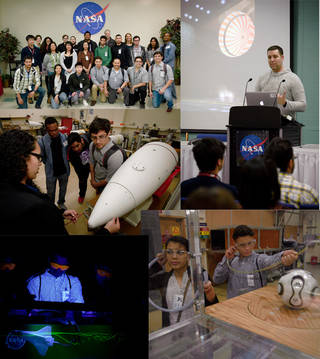
As part of the national initiative, National Week at the Labs, NASA Ames hosted 73 students from 15 community colleges in the San Francisco Bay Area to a half-day shadowing experience. The initiative is designed to encourage young people, especially girls and minorities, to pursue careers in Science, Technology, Engineering and Math (STEM).
Students from underrepresented and underserved minority groups were given a “behind the scene” look at federal agencies and federally-funded research and development labs. The National Week at the Labs (NW@L) event occurred between Feb. 27 and March 3, 2017 and focused on broadening career options to include America’s science laboratories as alternatives to business workplaces.
The activity provided one-on-one contact with Subject Matter Experts (SMEs), exposure to STEM careers and pathways, hands-on activities and inspirational interactions with other STEM-interested students in the Bay Area.
“We couldn’t be more thrilled with the level of interest and participation,” said Brenden Sanborn, an education specialist and event manager at Ames. “The students couldn’t have been more excited to see actual cutting-edge and innovative research, and our experts couldn’t have been more pleased to host these inquisitive, passionate and unfortunately, often overlooked students.”
Participants were paired with NASA scientists, researchers or engineers who work in the research and development laboratories and facilities at Ames, which included high-end computer science, machine learning, space science, robotics, aeronautical engineering, and more. The experience showed students what it is like to work at NASA, in general, and a nationally distinguished research and development center, specifically.
This activity contributed to NASA Education CoSTEM priorities, such as 4.1.3 Enhance the STEM experience of undergraduate students to graduate one million additional students with STEM degrees over the next 10 years; 4.1.4 Better serve groups historically underrepresented in STEM fields, specifically women and minorities, to increase their number of college graduates with STEM degrees in the next 10 years.
Karan Kendrick, of “Hidden Figures” Movie, Speaks at Ames
In honor of Women’s History Month, the Office of Diversity and Equal Opportunity (ODEO), African American Advisory Group (AAAG), Ames Veterans Committee (AVC), Ames Disability Advocate (ADA), Asian American Pacific Islander Advisory Group (AAPIAG), Lesbian, Gay, Bisexual, Transsexual, Queer, Intersex, Asexual (LGBTQIA), and the Women’s Influence Network (WIN), hosted a visit to the center by Karan Kendrick, who played the younger Joylette Coleman in the movie Hidden Figures.
In support of the movie, Kendrick created the Girls Empowerment Tour #GETit, a 10-city tour across the US, for girls ages 8-12. The objective of #GETit is to empower young girls to choose excellence on every step of their journey, and to show them how that choice can change the world! Karan has an opportunity to celebrate Women’s History Month by sharing some of her experiences from the film and provide words of encouragement.
Kendrick has worked tirelessly for the past decade to provide students in her beloved hometown in Georgia, and more recently in her new home in Burbank, California, with an opportunity to build character, discipline and an eternal passion for the arts. With her upcoming Girls Empowerment Tour in support of the highly anticipated Hidden Figures film—she took her show on the road.
Ames Aeronautics Pioneer Walter Vincenti Wins Lifetime Achievement Award
by Glenn Bugos
Walter Vincenti remembers how his first boss, Harvey Allen, answered his desk phone. In June 1940 the Ames Aeronautical Laboratory was less than six months old, a construction site on the southern edge of the San Francisco Bay. “Theoretical Concrete and Reinforced Aerodynamics Branch!” Allen bellowed. Fresh out of engineering school at Stanford University, so much of Vincenti’s early work in theoretical aerodynamics did indeed first involve designing concrete footings under what would become the world’s greatest collection of wind tunnels.
Vincenti spent the first 17 years of his remarkable career with the National Advisory Committee for Aeronautics (NACA), the predecessor of NASA, founded 102 years ago, on March 3, 1915.

Vincenti joined the NACA Ames Aeronautical Laboratory in 1940 as its fifth engineer. During the war years, like everyone with the NACA, he focused on solving problems discovered as American fighter aircraft pushed their limits. After the war, supersonic flight seemed possible. Walter led the new 1-by-3-foot supersonic wind tunnel at Ames that generated data fundamental to theories of efficient high-speed flight. VIcenti’s branch at Ames gave aircraft companies knowledge useful to design and build swept-wing aircraft that routinely broke the sound barrier. That sort of fundamental engineering — solid data and elegant mathematics in advance of industrial need — was what made the NACA such an exemplary federal agency.
Vincenti’s superb work in aerodynamic theory brought him to the attention of nearby Stanford University. Even though, like most NACA engineers, Vincenti had no doctorate, in 1957 Stanford offered him a full professorship and tasked him with re-invigorating their department of aeronautics and astronautics. He asked the Ames director, Smith DeFrance, if he should take the position. DeFrance thought Vincenti could do more for Ames by training its next generation of aerospace leaders. Indeed, one of Vincenti’s first graduate students was Dale Compton, a future Ames center director. Vincenti’s teaching, research and writing while at Stanford focused on physical gas dynamics, the theory of air flow around reentry vehicles.
Walter then embarked on a third career. The NACA had published a series of technical reports, thoroughly reviewed and carefully edited to be authoritative. While at the NACA, Vincenti earned a reputation for writing beautifully. He matched his writing skills with a concern, born in the tumult of the 1960s, about the societal impacts of accelerating technology. At Stanford he founded a program in science, technology and society, the first “STS” program in America. He started writing history, and in 1990 published “What Engineers Know and How They Know It.” In a series of engineering case studies, some harking back to his days with the NACA, Vincenti illuminated the processes of engineering epistemology — how engineers overlay data, theory, and rules-of-thumb well enough that they feel certain enough to commit to a specific design. The Society for the History of Technology awarded him both its prize for best book, and for lifetime achievement in the understanding of technology’s past.
Vincenti recently earned the Guggenheim Medal for 2016. The Guggenheim Medal is perhaps the premier recognition for a lifetime of achievement in the advancement of aeronautics. The American Institute of Aeronautics and Astronautics administers the award, jointly with the American Society of Mechanical Engineers, the Society of Automotive Engineers and the American Helicopter Society. The medal was established in 1929 by Daniel Guggenheim, credited with working with the NACA to bring aeronautical theory to America in the 1930s.
The award honors Vincenti’s “seminal pioneering supersonic wind tunnel research, education in high temperature gas dynamics, and exceptional contributions to the history of engineering technology.”
Walter joins such Guggenheim awardees as his first boss at Ames, Harvey Allen; most of the members of the 1940 NACA Main Committee; his Stanford mentor, William Durand; and his Stanford teaching colleagues Nicholas Hoff, Holt Ashley, Antony Jameson and Art Bryson.
The NASA Langley Research Center, the first NACA laboratory, turns100 years old this summer, and will host several events to celebrate its storied history with the NACA and NASA. Walter turns 100 this April.
Colaprete Recognized with H. Julian Allen Award
Anthony Colaprete presented a H. Julian Allen Award seminar, “Water on the Moon – Recent Discoveries and Future Plans” on March 16, 2017. The H. Julian Allen award is truly one of NASA Ames’ highest honors, and was established in 1969 to annually recognize a scientific or engineering paper of outstanding technical merit and significance.
It was awarded to Colaprete in 2016 for his paper “Detection of Water in the LCROSS Ejecta Plume.” Colaprete is an internationally known planetary scientist recognized for his contributions towards the Lunar CRater Observation and Sensing Satellite (LCROSS) mission and his work on the Martian climate system. In his presentation, Colaprete provided insight into NASA’s Resource Prospector mission aimed to harvest lunar resources, based on the findings of the LCROSS and LRO missions.
Discovery of water on other planetary bodies brings us one step closer to unveiling the questions associated with the early evolution and formation of solar system. NASA Ames has played a significant role in catalyzing scientific lunar research by initiating and managing missions to the Moon.





















